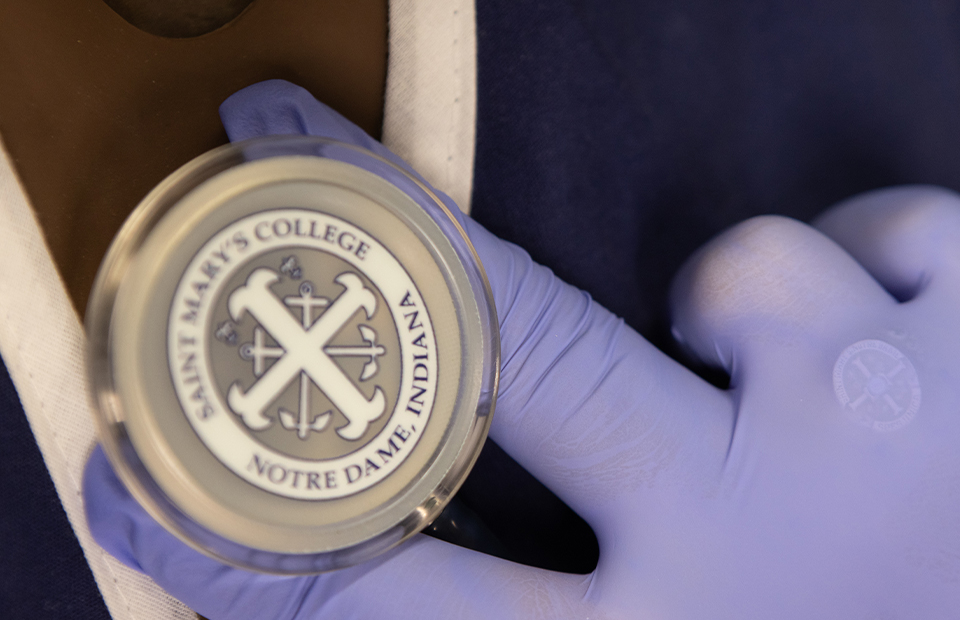Caring Beyond the Cure
By Kaitlyn King '25
The summer before my first semester of nursing clinicals, I had visions of pouring my heart into each patient I encountered. I was eager to make a positive impact on every individual, empowering them to regain their health and make a full recovery. But on the first day of my chronic med-surg course, we were plunged into the deep end of reality with our lecture on hospice and palliative care. I laughed to myself: What a way to kick off the semester, starting with “the end.”
 The realization of our mortality was a profound experience for me. As the lectures unfolded, I found myself discomforted by a heightened awareness of the transient nature of life. The concept of a “good death” was particularly baffling. How could there be anything “good” about death? The paradox was further magnified as I concurrently began my perinatal clinical rotation, witnessing the miracle of birth each week.
The realization of our mortality was a profound experience for me. As the lectures unfolded, I found myself discomforted by a heightened awareness of the transient nature of life. The concept of a “good death” was particularly baffling. How could there be anything “good” about death? The paradox was further magnified as I concurrently began my perinatal clinical rotation, witnessing the miracle of birth each week.
During the last week of my maternity clinical, I was able to assist in a live birth. The imminent arrival of the baby meant a whirlwind of activity. Time seemed to accelerate as I moved from triage to the patient’s birthing suite; the anticipation of a family of four growing to five was becoming a reality.
The laboring process felt very chaotic, and I felt powerless: whereas an operating room runs on the surgeon’s schedule, we were now on God’s time. The midwife prepared the mother physically and mentally throughout the entire process. But our team effort was hardly needed: the birth was the most natural process, a tribute to the mother’s resilience and the baby’s longing for life. I felt privileged to have witnessed such a beautiful event for this family; a moment of transition.
My next clinical was the adult med-surg course, and that led me to a hospice care center for observation. I was stepping into a world unknown to me, a place where life comes to an end, and I was filled with trepidation. Feeling uncertain about how to communicate with a family whose loved one was on the precipice of death, I stayed close to the nurse I was shadowing. The patient was deep in the tranquility of sleep. Their room was filled with the comforting presence of family, evidence of a life fully lived and filled with love.
The patient’s adult children, their faces displaying worry and sorrow, sought answers. They wanted to know a timeline, a countdown to the inevitable end. But much like with the birthing process, we were now operating on God’s time. Time, in this place, was impossible to predict. Yes, there were signs, subtle shifts in the patient’s condition that hinted at what was to come, but nothing was definitive. The end, when it came, was peaceful. The patient passed in their sleep, surrounded by the love of their children and grandchildren. It was a poignant moment, another gentle transition, this time from this world to the next. Later, I was overcome with emotion as I thought about how all in one semester, I had seen life enter this world and witnessed its departure.
Both birth and death are intrinsic parts of life, neither of which inherently requires medical intervention. Our primary role as nurses is not to cure, but to provide compassionate care. We are granted the unique privilege to support individuals through the natural processes of life’s beginning and end. Much like a midwife who provides support and guides life into the world, the hospice nurse acts as a midwife to the soul. My first clinical experience was a testament to the cyclical nature of life, a reminder of the delicate balance between beginnings and endings, and the pivotal role we play as nurses in these critical moments. This realization has transformed my perspective and deepened my commitment to caring for not only my patients’ physical condition but for their souls as well.

